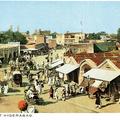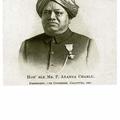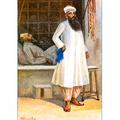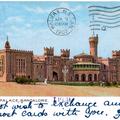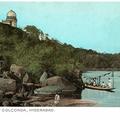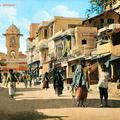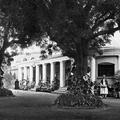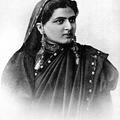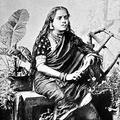Street at Hyderabad.
A particularly charming postcard of a city bazaar, with the curve of the street in the foreground, daubs of red on two sun umbrellas, and a variety of carriages plying the mud-baked road.
“Hyderabad is the premier native state of India, having twice

